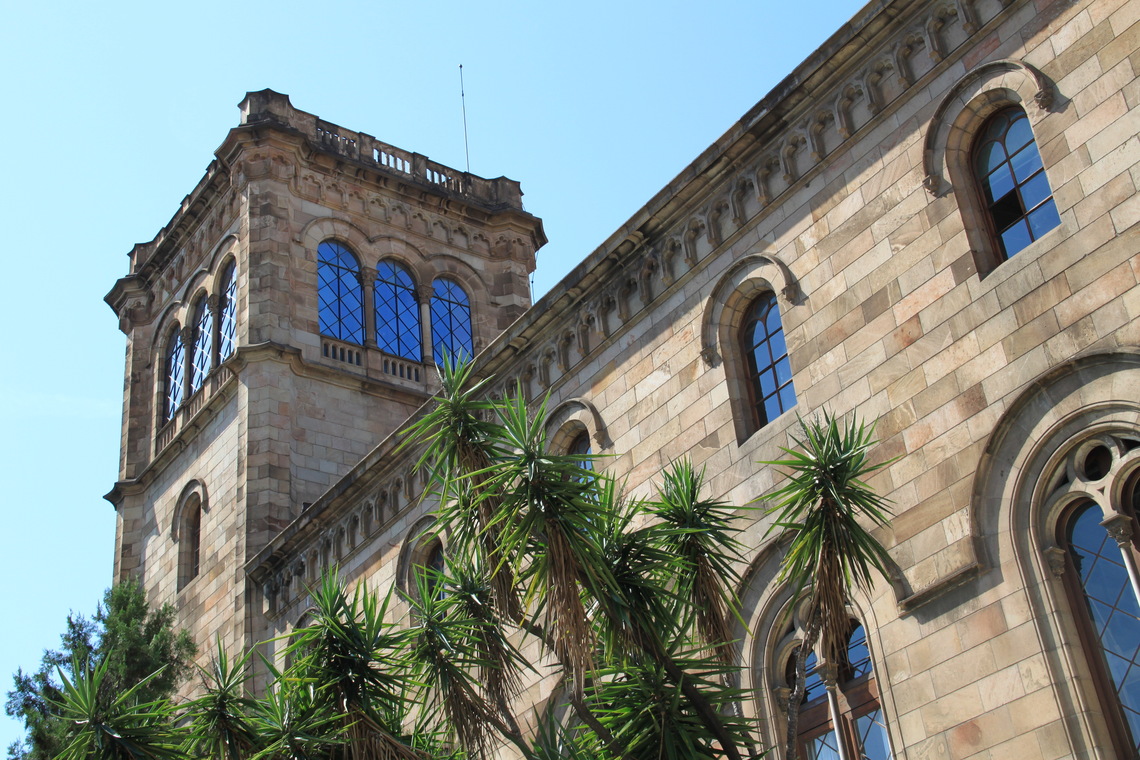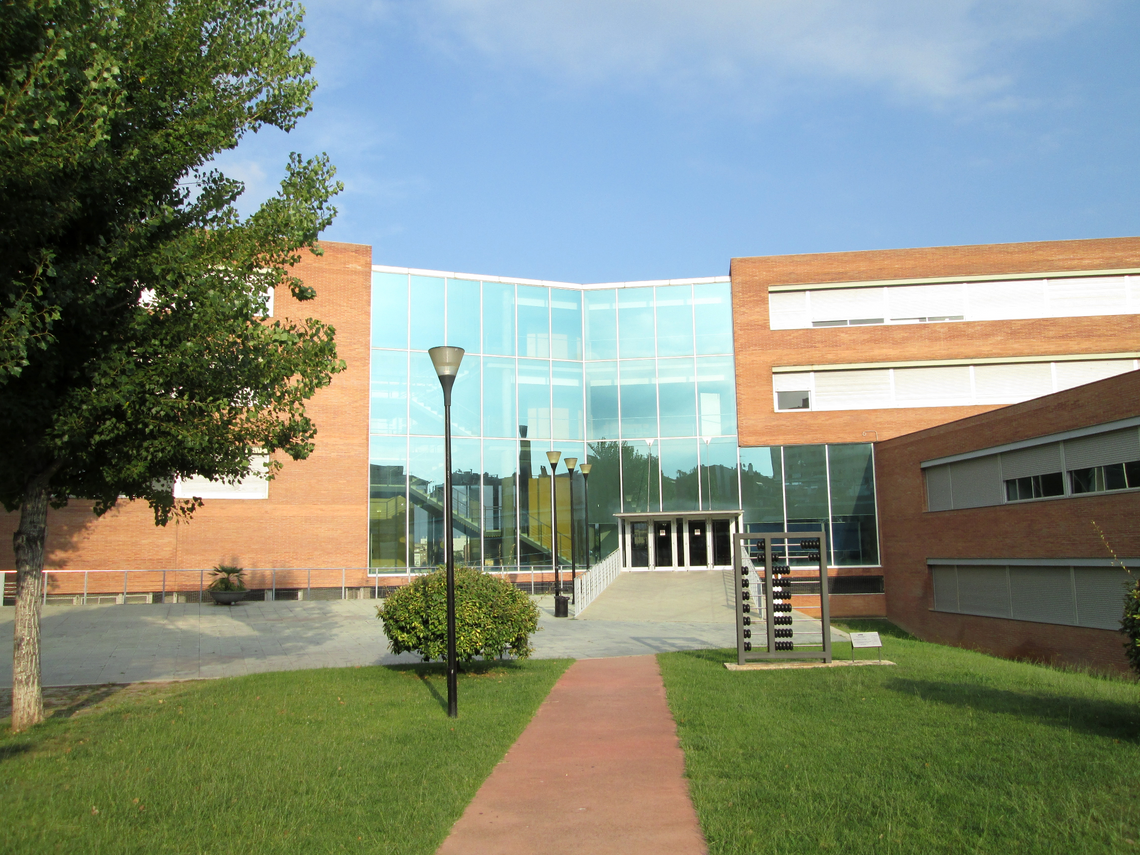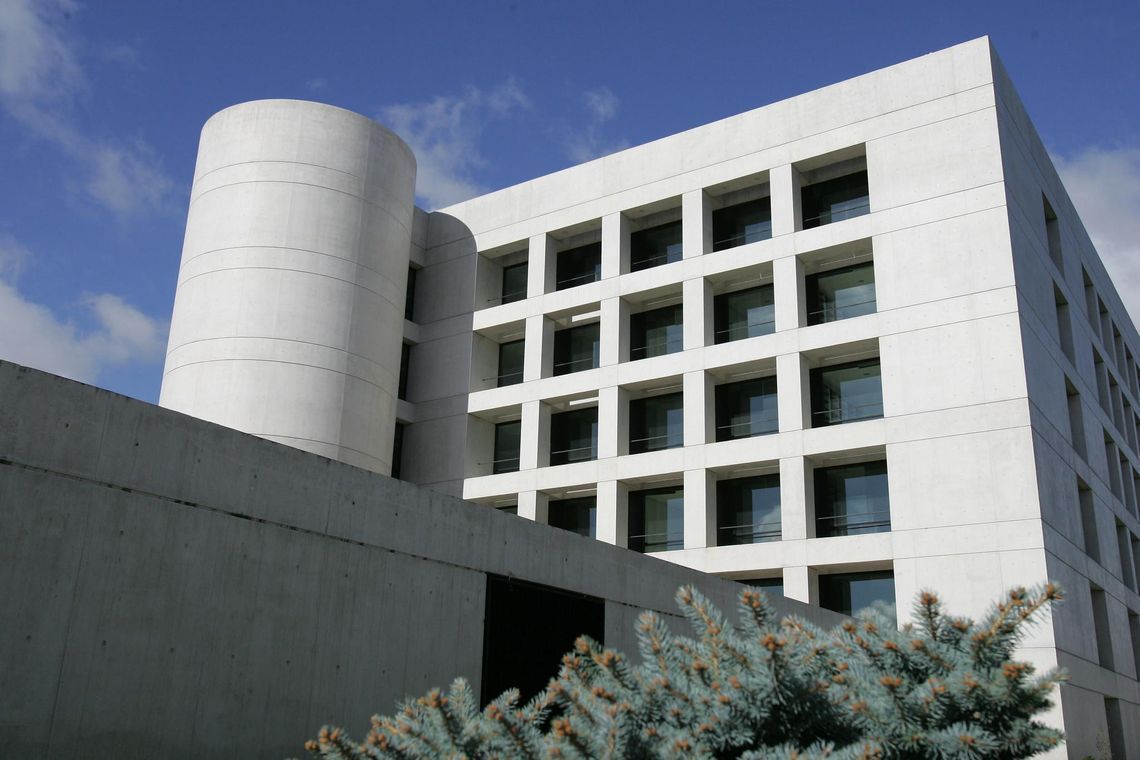Universities in Spain began their history back in the medieval, and today more than 25 universities in the country are included in the QS global ranking. Spanish universities are regularly accredited by the national education quality assessment agency ANECA. Every year, the percentage of foreign students in them is growing: studying at Spanish universities is significantly cheaper than in the majority of European countries, and local diplomas are recognized worldwide. Last but not least, Spain is the third in the number of UNESCO World Heritage sites after Italy and China — it leaves no one indifferent.
List of the best universities in Spain
Items 1-6 of 403
Advanced searchAutonomous University of Madrid
Spain, MadridAutonomous University of Barcelona
Complutense University of Madrid
Spain, MadridPompeu Fabra University
Polytechnic University of Catalonia
Spain, Girona
Advantages of universities in Spain
- Prices. Studying and living in Spain will be much cheaper than in other EU countries, not to mention the United States and Great Britain. The tuition per year at a state university for a foreign student can be as low as 489 USD. Renting a room in a student apartment will cost about 266 USD/month. Students receive discounts at museums, cafes, and when using public transportation.
- Bilingual education. Most prestigious universities in the country offer courses in both Spanish and English. Some of the subjects for study are chosen by the students themselves, therefore, by the time they graduate, they have the opportunity to master the skills in their specialty in the two most spoken languages after Mandarin. Each university also has Spanish courses for international students.
- Centuries-old traditions. Some universities in Spain were founded back in the 13th century, so there is no doubt in their educational methods. For instance, the University of Salamanca (Universidad de Salamanca) is the oldest university in the country. It was opened as a collegiate school, in 1218 received the status of a “universal school” (a university) and has continued teaching since then.
- Developed infrastructure. Green areas, multi-storey libraries, equipped with the latest technology auditoriums, laboratories of innovative research — all of this can be found in the majority of Spanish universities. On campuses, there are also areas for self-study in the open air, as the weather during the year rarely goes below +15 °C.
Disadvantages of universities in Spain
- Level of prestige in Europe and the world. Spanish universities are constantly developing. But they are still far from Anglo-Saxon universities, which occupy the top spots in the world rankings. Universities of Spain are a frequent choice for an exchange semester, but not seen as an investment in a prestigious education. Still some universities conducting studies in English or ones with double degree programs still occupy high positions in the QS, THE, and CWUR ratings.
- Autonomy of universities. Spain has a rather complicated administrative structure. Often there are conflicts between regions. Some universities are controlled by autonomous communities like Catalonia and Valencia. The admission requirements may differ from those in the rest of Spain, and the teaching is usually conducted in the local language or dialect. Students may have difficulty finding employment or transferring to another university.
- Politics. In Spain, universities are not far removed from the world of politics. Many universities openly declare their political affiliation. This may negatively affect the reputation of students and teachers in the scientific community and in society as a whole.
- The need to legalize a diploma. To enter a Spanish university, non-EU citizens are often required to legalize and/or homologate a document of previous education (certificate or diploma), if it was obtained in their native country. This is a long and complicated procedure. Read more about it in the article Education in Spain.


Admission requirements to universities in Spain
| Type of training | Age | Duration | Min.cost | Average cost | Min. language level |
|---|---|---|---|---|---|
| Foundation | 17+ | 1-2 years | 4,252 USD/year | 10,630 USD/year | DELE B1 / IELTS 6.0 / TOEFL 80 |
| Bachelor's | 18+ | 4 years | 489 USD/year | 12,756 USD/year | DELE B1 / IELTS 6.0 / TOEFL 80 |
| Master's | 20+ | 1-2 years | 765 USD / year | 2,264 USD / year | DELE B2-C1 / IELTS 6.0 / TOEFL 80 |
| MBA | 20+ | 1-2 years | 19,135 USD / year | 40,395 USD / year | DELE B2-C1 / IELTS 6.5, GMAT 600 |
| Doctoral | 20+ | 3 years | 638 USD / year | 2,126 USD / year | DELE B2-C1 / IELTS 6.5 |
The Ministry of Education of Spain has no authority over the university admission process (the same system works in the USA, Great Britain, and a number of other countries), therefore universities have the right to present their own requirements for applicants. Every university in Spain has its own list of the necessary documents and/or examinations required for admission. It may change slightly every year, so it’s worth checking the current requirements on the website of the desired university. Below you can see the standard lists of documents for admission to the bachelor’s, master’s and doctoral programs in Spain.
Admission requirements to universities in Spain
For admission to the bachelor’s the following is required:
- Certificate of secondary education that meets the Spanish standards (12 years of education): the equivalent would be first two courses of a university, IB diploma, A-Level, Foundation or PAU;
- Motivation letter;
- Spanish and/or English language proficiency certificate: IELTS / TOEFL or DELE;
- Confirmation of sports achievements, if any;
- The result of Selectividad (PAU), if the university requires it;
- Registration fee ~ 53 USD.
For admission to the master’s the following is required:
- Bachelor’s/Master’s degree of the similar or related specialty;
- Motivation letter;
- Spanish and/or English language proficiency certificate: IELTS / TOEFL or DELE;
- Recommendations from teachers (1-2 pcs.);
- Registration fee ~ 106 USD.
For applicants with non-EU bachelor’s degrees:
- Copy of a diploma and a list of completed disciplines with translation into Spanish.
For admission to the doctoral program the following is required:
- Master's degree of the similar or related specialty;
- At least 300 ECTS for the previous stages of education, 60 of which should be from master’s studies;
- Research Proposal with the topic for a future dissertation;
- Motivation letter;
- Registration fee ~ 106 USD;
For applicants with non-EU master’s degrees:
- Copy of a diploma and a list of completed disciplines with translation into Spanish.
Types of universities of Spain
Classical universities offer the widest selection of specialties in both the fundamental and applied sciences. Universities themselves, according to the standard European system, are divided into departments and faculties, each of which is focused on a specific field of science.
Most specialties are divided into stages of bachelor’s (Diplomatura) and master's (Licenciatura). Students may choose to not continue their studies after obtaining a bachelor’s degree. However, in programs such as medicine and veterinary medicine, in order to obtain a complete higher education, both stages are required.
Spanish universities also often come together to create research institutes or doctoral colleges. Their activities are aimed at the development of research and PhD programs, less often — master's programs.
In addition to standard degrees (bachelor’s, master’s, doctoral), Spanish universities often offer a number of undergraduate programs (Maestrias), which take 1-2 years to complete. Certificates obtained at the end of the course may not be recognized at universities in other countries. Nevertheless, they are extremely appreciated in some areas of professional activity and can be considered advanced training.
In addition to classical universities, in Spain there are a number of higher education institutions with their own characteristics. These include:
- Polytechnic universities. For example, University of Valencia and Polytechnic University of Valencia, Autonomous University of Madrid and the Polytechnic University of Madrid all exist separately. Polytechnic universities train exclusively industrial specialists: engineers and architects. Higher technical schools have the same specifics in Spain. In "ordinary" universities, these areas also exist, but, as a rule, not at such a high level. Training in technical specialties traditionally lasts for 1-2 years longer than in the others. Graduates of undergraduate polytechnic universities receive the title of Arquitectura Técnica or Ingeniería Técnica. Then they can optionally continue their studies in the magistracy in order to become full-fledged Arquitecto or Ingeniero.
- Higher schools of arts. Depending on the chosen field of art, Spanish students can study in the following types of higher schools: conservatories (Conservatorio), higher schools of music and dance (Escuela Superior de Música y Danza), theater schools (Escuela Superior de Arte Dramático), Schools for the conservation and restoration of cultural heritage objects (Escuela Superior de Conservación y Restauración de Bienes Culturales), Schools of Design (Escuela de Diseño) and others. Higher art schools often collaborate with major universities in their autonomous community. This allows art education institutions to develop and promote their research programs. Examples of higher art schools can be found here.
- Business Schools. The main direction of universities with business education is MBA programs (Master of Business Administration), which last for 1-2 years on average. The language of instruction is English. Business schools may exist autonomously or at universities. Some have several branches around the world. So students can choose at least two countries of study, which allows them to study the specifics of business management in different systems of government. Each school tries to attract leading businessmen as teachers, which gives such institutions prestige and, of course, increases the price tag: the cost of MBA programs can reach up to 42,521 USD, as in the school IEDE.
- University schools. Formally, such schools are part of large universities. However, the training programs here are more applied than academic. Popular specialties are nurse, librarian, elementary school teacher. Education takes 2-3 years and does not involve obtaining a degree higher than a bachelor’s. Graduates can find a job immediately after graduation, but only for a position corresponding to their level of education: for example, you cannot work as a doctor with a nurse diploma.
- Online universities. Such universities offer e-learning. They can be both public and private. Education here includes three cycles, as in full-time universities (undergraduate, graduate, doctoral), a diploma is also valued on a par with the usual. You can study and improve qualifications in such universities throughout your life. Read more about online universities here.

Public and private universities in Spain
There are 76 universities in Spain: 45 of them are state-owned, 31 are private. Andalusia is the leader in the number of state universities, and Madrid, Catalonia and Castile-Leon in the number of private universities. There are two types of private universities: the first is run by private organizations, the second by the Catholic Church. Catholic universities can be secular and no different from ordinary universities. Historically, there were four of them in Spain: the University of Salamanca, the University of Deusto, the Comillas Pontifical University, and the Universidad de Navarra. They were formally the first private educational institutions in the country. Three of them are Jesuit, and the latter is ruled by Opus Dei, a Catholic organization.
According to statistics, many more students go to state universities annually than to private ones[1]. State universities also occupy higher ranks in world rankings. This is facilitated by several factors by which two types of universities can be compared.
| State universities | Private universities |
|---|---|
| Have a rich legacy | Most have been created over the past 20 years |
| It’s hard to get admitted, because it often depends on the passing grade for entrance exams | It’s easier to enroll as there are no entrance exams. Instead, you need to go through an interview or write a motivation letter |
| Funded by the state, so the cost is relatively low. Discounts are possible for preferential categories of applicants | Tuition is much higher since there is no government funding |
| A university scholarship can cover the cost of tuition, accommodation, study materials | Scholarships from the Ministry of Education for students of private training centers rarely cover all student expenses |
| They offer more study areas than private universities, including Basic sciences | Common directions: humanities, social and legal sciences, economics and management |
| Have more resources for research than private universities | Have limited resources to conduct research, but focus on training and subsequent employment |
| Give their students more independence and control them less | Fewer number of students leads to a more personalised education |
| Some Spanish companies prefer to hire graduates of public universities | Have more contacts with private companies, offer their students many internships and potential employment |
TOP-3 state universities according to the Spanish agency CSIC in 2019:
- University of Barcelona (Universidad de Barcelona);
- University of Valencia (Universidad de Valencia);
- Autonomous University of Barcelona (Universidad Autónoma de Barcelona).
TOP 3 private universities in Spain according to the Spanish edition of El Mundo in 2019:
- University of Navarra (Universidad de Navarra);
- University of Ramon (Universidad Ramón Llull);
- Comillas Pontifical University (Universidad Pontifica de Comillas).


Universities in the autonomous communities of Spain
One of the most important changes in the university system was the adoption of the new Spanish Constitution of 1978 and the creation of autonomous communities. Along with these changes, recognition of the autonomy of universities and the decentralization of the Spanish higher education system followed. That is why each university has the right to set its own requirements for admission, as well as establish its own rules of study and internal regulations.
The largest autonomous community within Spain is Catalonia. For several years this territory has been striving for complete independence from the rest of the country, including at the level of university education. Teaching in local schools is in Catalan, and the history of Spain is presented from the point of view of Catalonia.
For international students, language can become a major obstacle. In addition to Spanish, Catalan is also considered the official language. Contrary to misconceptions, this is not a dialect of Spanish: Catalan differs from it even more than Portuguese. However, it also belongs to the Roman group of languages and is a mix of Spanish and French. Catalan is the official language at many universities in Barcelona. But nothing prevents students from choosing English language courses.
A similar situation occurs in the autonomous community of Valencia. The official language here is Valencian. This is a dialect of Catalan. It is the main language of the prestigious University of Valencia.
Groups and associations of educational institutions of Spain
Spanish associations
- ATIC (Asociación de Universidades con Titulaciones de Información y Comunicación) — association of Spanish universities specializing in information and communication sciences. The organization's activities are aimed at improving educational methods in the professional field, as well as developing relations with other scientific communities in Spain, Europe and Latin America.
- CRUE (Crue Universidades Españolas) — an organization that works to create a high quality system of higher education, seeks to provide all students with equal opportunities. The Association promotes university education as a key tool for the economic and social development of Spain.
- UNE (Unión de Editoriales Universitarias Españolas) — a nonprofit association of Publishing houses and research centers of Spanish universities. Its main goal is coordination of university publications, promotion of joint publications between various scientific communities.
- CREUP (La Coordinadora de Representantes de Estudiantes de Universidades Públicas) — a state association that represents more than 1,000,000 students. Currently, it consists of 35 state universities and is constantly growing. For more than 12 years, the association has represented students in higher education institutions at the national and international levels.
Ibero-American Associations
- AUIP (Asociación Universitaria Iberoamericana de Postgrado) — an international non-governmental organization recognized by UNESCO. The main goal is to support and develop doctoral programs in the countries of Ibero-America.
- Grupo Tordesillas is an academic network of universities in Brazil, Portugal and Spain. Promotes cooperation between universities in the field of science and technology.
- Grupo La Rabida — a group of universities, the purpose of which is academic, scientific, technological and cultural cooperation, and strengthening the bond between the Iberian people.
- Many Spanish universities are also members of large international associations like EUA (European University Association), UNIMED (Mediterranean University Union), Coimbra Group.
Free universities in Spain
All higher education in Spain is paid. The cost of training for non-EU citizens is significantly higher. The cost is calculated based on the price of ECTS (depending on the university and faculty, it will be from 12 to 32 USD). Therefore, the final fee for the year of study depends on the selected disciplines.
To reduce their training costs, applicants can participate in scholarship programs. Material support is provided by the state or private foundations. The most comprehensive coverage of student expenses in Spain is provided by state scholarships, but only applicants from countries with which Spain seeks to improve relations have the chance to obtain them. However, there are many options for private financing.
Financial support for foreigners is offered by the majority of the country's popular universities and business schools. Scholarships cover from 15% to 100% of the tuition. For bachelor’s programs, it is an average of 75%, for master's programs — 50%. Doctoral students rarely have the opportunity to receive a scholarship, but the cost of these programs in Spain is relatively low.
The application is submitted before the start of the school year. Each university sets its own deadline. The Commission evaluates the academic success of the applicant and his extracurricular activity in areas related to future studies. A low income of the applicant’s family could also serve as a basis for receiving a scholarship.
List of scholarships
- Pompeu Fabra University Scholarship for gifted students;
- EADA Business School Scholarship in Barcelona;
- Zaragoza Logistics Center scholarship for women;
- ESADE Business School Scholarship;
- Graduate School of Economics scholarship for outstanding achievements;
- Scholarships from Instituto de Empresa;
- IESE Business School Scholarship at the University of Navarra;
- Scholarship from the center of Spanish Studies Abroad.


Grading system at universities in Spain
Spanish universities have two equivalent student grading systems: 10-point and 5-point. They are comparable to each other.
| Rating | 10-point | 5-point |
|---|---|---|
| Poor | 1 — 4.9 | 1 — Suspenso |
| Satisfactory | 5 — 6.9 | 2 — Aprobado |
| Good | 7 — 8.9 | 3 — Notable |
| Excellent | 9 — 9.9 | 4 — Sobresaliente |
| Excellent + | 10 | 5 — Matrícula de Honor |
Getting a 9 or higher for the exam is very difficult. Only 5% of students succeed.
An oral exam at Spanish universities is much more common than a written one. The average student response is 15 minutes. However, more attention in universities is paid not to exams, but to term papers and dissertations. Students defend the latter in front of the commission.
Interesting facts about universities in Spain
- Spanish universities are characterized by a high level of gender equality both among students and in teaching staff. In 1785, Complutense University of Madrid became one of the first universities in the world where a woman was given the degree of Doctor of Philosophy (PhD)[2]. The university today takes the issue of gender equality seriously: there is a separate page dedicated to this matter on the website of the university.
- In 1952, Josemaría Escrivá created the famous University of Navarra in Pamplona. This man is also the founder of the personal prelature of the Catholic Church Opus Dei, which is known to the general public for Dan Brown's popular novel The Da Vinci Code and the film of the same name.
- The University of Salamanca is the oldest university in Spain. It is one of the four oldest universities in Europe along with Bologna, Oxford, and Sorbonne. The university was founded in 1218 and is located in the city of Salamanca, in the autonomous community of Castile and Leon.
- In Spanish schools, excellent grades are rarely a priority. After the first year of university, a very high rating of expulsions is up to 40% in the whole country[3]. Many students go into the second year with academic debts or need to retake a year, failing both exam attempts. This is considered the norm in the student community.

Choosing an academic program is a very complex, energy- and time-consuming process.
We will help you determine what to expect from studying abroad, analyze your experience, and select the most suitable programs.














